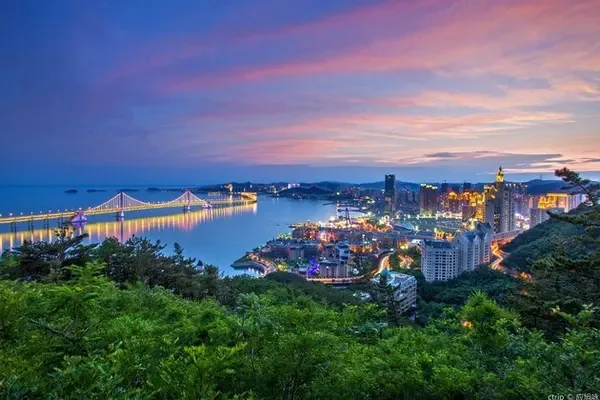introduce
Mausoleum of Genghis Khan (Mausoleum Scenic Area) is located near Ejin Horo Town, Ordos City, about 50 kilometers away from downtown Ordos. The Mausoleum of Genghis Khan is the location of the tomb of Genghis Khan, the proud son of heaven, and the mausoleum that the Darghuts have been guarding for 700 years. It should be noted that there is also a Genghis Khan Mausoleum Tourist Area (Donglian Scenic Area) near the Mausoleum of Genghis Khan. This scenic spot is an artificial cultural theme park newly built by a certain group in 2004. European map and other scenic spots. Tickets for the two scenic spots are sold separately.
The ancient Mongolians had a tradition of secret burials. According to legend, when Genghis Khan was buried, for the sake of confidentiality, more than 10,000 war horses used to lay down the ground at the burial place, and an independent tree was used as the tombstone. In order to be able to find the cemetery in the future, at the burial place of Genghis Khan, in front of a female camel, he killed his own baby camel and sprinkled the blood on the cemetery. After the green grass germinated in the second spring, the cemetery was no different from other places. In this case, when descendants sacrificed to Genghis Khan, they led the female camel. When the female camel came to the cemetery, she would whine incessantly as she remembered the calf that had been killed. The sacrificial offerings were made grandly at the place where the female camel wailed. However, after the female camel died, no one was able to find Genghis Khan's tomb.
When you walk into the gate of the scenic spot, you will face the grand archway and the bronze statue square of Genghis Khan, and then go forward to the main building of the cemetery - the magnificent Genghis Khan Mausoleum Palace. Milky white walls, vermilion doors and windows, golden roof, blue cloud map, full of Mongolian national characteristics.
The buildings here retain the shape characteristics of Genghis Khan's Eight White Houses, which are composed of the main hall, the back hall, the east and west halls, and the east and west halls. In the middle of the main hall, there is a statue of Genghis Khan, and the background is the territory map of the "Four Khanates". You can also see the scimitar, bow and spear used by the Great Khan here. In the east and west corridors, there are large-scale murals for you to watch. The murals describe major events such as the birth, death, and unification of the Mongolian tribes of the Great Khan.
On the left side of the mausoleum is the altar of Suled, which is the place where Genghis Khan's God of War is enshrined. God of War. On the right side of the mausoleum is the cultural exhibition hall, which systematically displays the vicissitudes of history of Genghis Khan's mausoleum and the ancient and mysterious Genghis Khan sacrifices through pictures and objects. Next to the cultural hall is the Ishihatun Sacrificial Hall, which is a palace dedicated to the wife of Tuo Lei (the fourth son of Genghis Khan). Torre's wife, Mrs. Yixi, raised two generations of great Khans, Meng Ge and Kublai Khan, for Mongolia. The courtyard also enshrines the spiritual bags of Genghis Khan's younger brother Hasaer, Biligutai and Tuolei.
Every morning at 8:30, traditional sacrificial activities will be held in the Mausoleum Palace. Every year on the 17th day of the third month of the lunar calendar, it is the day when Genghis Khan established his immortal military exploits. On that day, the scenic spot will hold a grand memorial ceremony for "Su Le Ding", which is very lively.
opening hours
All year round (winter time) 08:30-18:00 (stop ticket sales at 17:00); year round (summer time) 07:30-19:30 (stop ticket sales at 18:30)
Preferential treatment policy
Service Facilities
must see tips
Genghis Khan Mausoleum (Mausoleum Scenic Area) and Genghis Khan Mausoleum Tourist Area (Donglian Scenic Area) not far away are two scenic spots that sell tickets separately!

